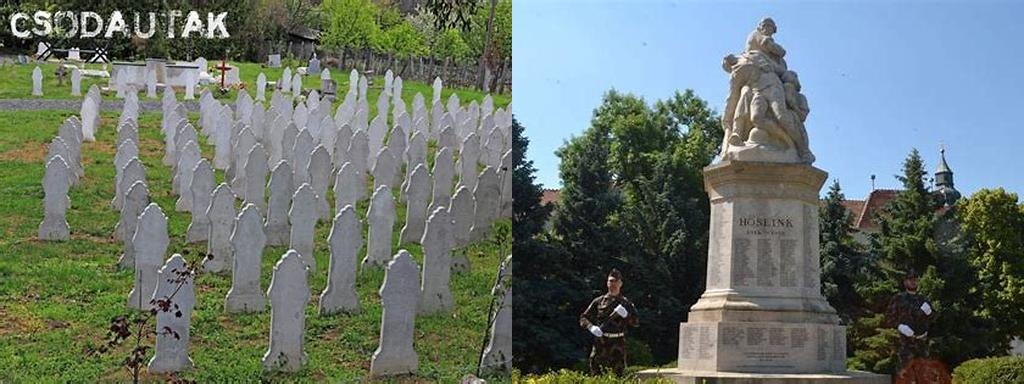
Szentesi Hősök Temetője—or the Szentes Heroes’ Cemetery—is not your typical historical site. It’s a fascinating, contemplative corner tucked into the peaceful heart of the Hungarian Great Plain, a place where echoes of the past entwine with the calm beauty of nature. Walking among its stone crosses and weathered memorials, you’ll find yourself stepping into a story far larger than a single town. Here in Szentes, every engraved name and modest monument reveals both a world-shaping history and the very real, personal loss experienced through Hungary’s turbulent 20th century. For those curious to dive deeper into Hungarian history or just seeking a quiet, reflective escape, the Heroes’ Cemetery promises something truly special.
The cemetery itself dates back to 1914, when the guns of the First World War thundered across Europe and small towns like Szentes were called to make sacrifices unimaginable in peacetime. It began as a modest burial site for the town’s soldiers—farm boys and shopkeepers, teachers and carpenters—sent off to defend their homeland. By the end of World War I, these grounds witnessed far too many losses, each grave marked by a quiet dignity. In the years that followed, as Hungary endured the hardships of the interwar period, the cemetery became an emblem not only of sorrow but of deep pride and communal remembrance.
Strolling through Szentesi Hősök Temetője today, you’ll immediately notice the cemetery’s unique blend of simplicity and reverence. There are no sprawling mausoleums or extravagant statues—instead, you’ll find neat rows of crosses, understated headstones, and the solemn, touching sight of family-tended graves. At the center stands the Heroes’ Monument, eloquently reminding visitors of the cost of conflict and the gratitude owed to those who served. The memorial’s dignified inscriptions urge us to remember not just the battles, but the humanity of each man and woman lost. If you visit in late October or early November, you’ll likely witness locals laying candles and wreaths for All Saints’ Day, joining together in a moving celebration of memory and community.
What makes this cemetery especially unique is its inclusiveness. Beyond Hungarian soldiers, the cemetery holds graves that tell international stories too—prisoners of war from Italy and Russia, and sometimes even enemy combatants who died far from home. Each grave is maintained with care and respect, echoing a spirit of reconciliation rare outside such sacred spaces. The presence of foreign names among the local ones is a powerful, poignant reminder: history doesn’t draw neat boundaries between suffering and sacrifice.
For those interested in architecture or historical symbolism, you’ll find subtle but fascinating details here. The headstones reflect early 20th-century funerary art in Hungary, and the layout of the Heroes’ Cemetery intentionally resembles a tranquil park, inviting quiet reflection. Carefully restored over the decades, the cemetery’s pathways meander under tall, old trees—many planted as living memorials for the fallen. Each season brings its own quietly dramatic transformation: spring flowers nestle among the stones, summer sunlight dapples the grass, autumn leaves carpet the ground, and winter frost adds a serene hush.
To really appreciate the significance of this place, I encourage visitors to seek out the information plaques on-site, which tell the stories behind both individual graves and broader historical events. Or, if you speak Hungarian, engage a local guide—Szentes residents are well known for their warmth and hospitality, and most families here have a direct connection to the cemetery’s history. Listen for tales of grandparents whose stories bring the world wars to vivid, human life.
Szentes itself is a charming town worth exploring before or after your visit to the Heroes’ Cemetery. Grab a coffee at a local cafe, or stroll by the quietly flowing Kurca River. If you happen to be here during one of the town’s folk festivals, you’ll sense the living, breathing culture that the Heroes’ Cemetery protects: a resilience and pride shaped by years of hope and hardship.
Visiting Szentesi Hősök Temetője isn’t just about paying respects to the fallen—it’s a chance to experience a piece of living, breathing history. It’s about feeling the threads that connect past and present, locals and visitors, and discovering a spot where peace, memory, and reflection are always in bloom. So make sure this remarkable, moving cemetery is on your itinerary—you’ll leave with a heightened appreciation not just of history, but of humanity itself.





